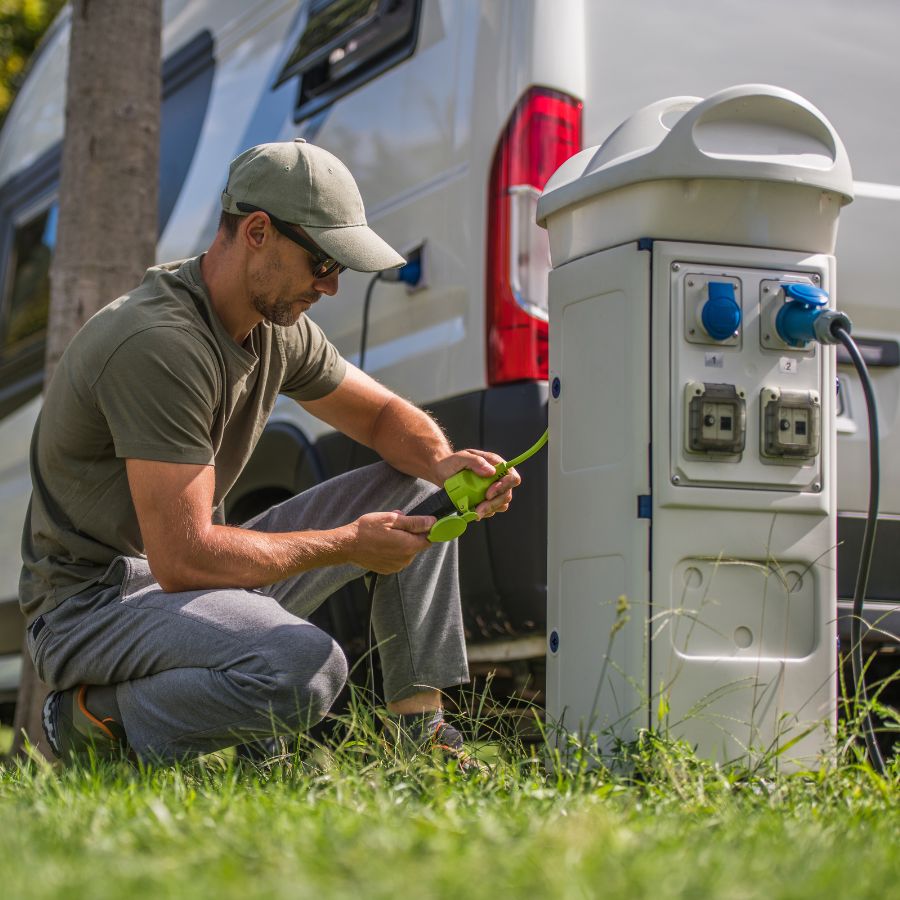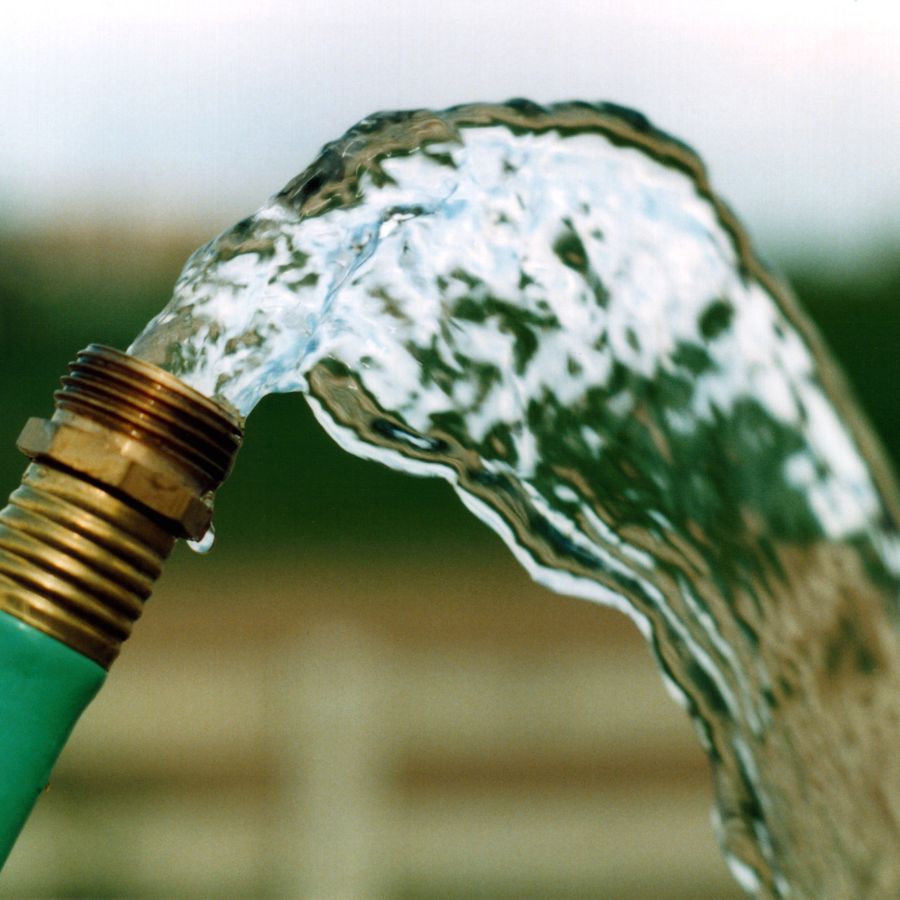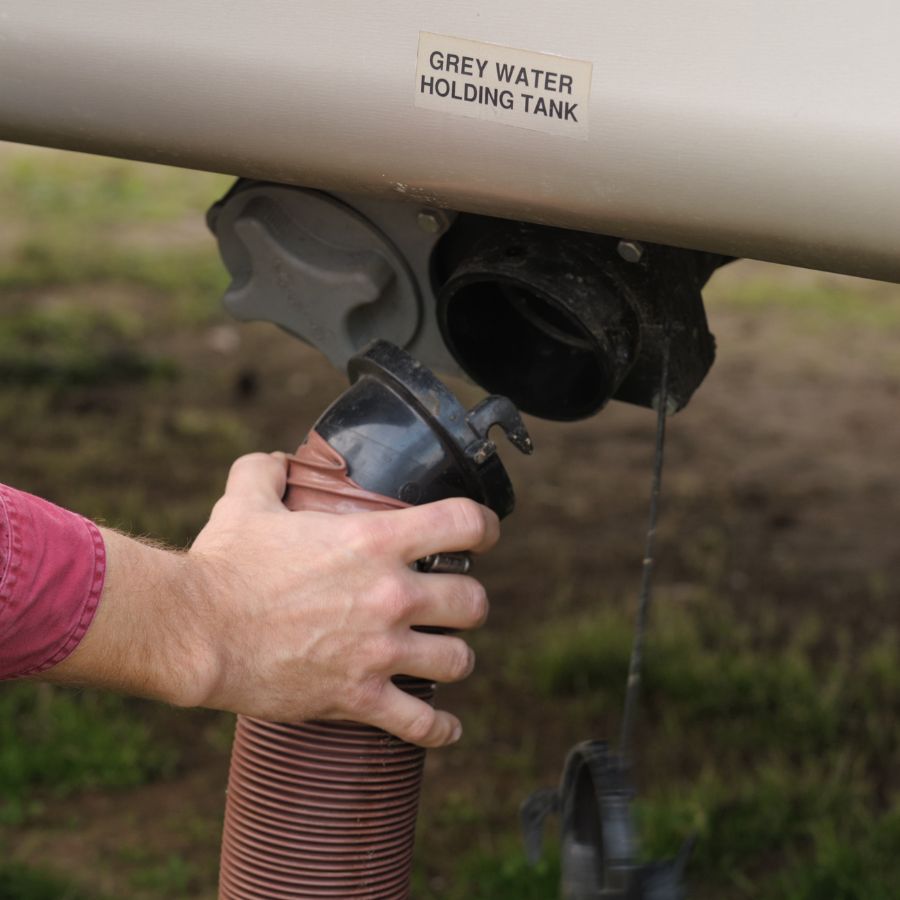Congratulations on your new RV from Van City RV! If this is your first time owning an RV, you’re probably wondering how to go about hooking up your motorhome or travel trailer once you arrive at the campground! Below, we’ll walk you through the process with these easy RV tips for hooking up your RV!

Get a Water Hose for Fresh Water Hookup
You’ll need a few simple things before you leave the house to make your setup at the campground easy. The first thing is a couple of hoses. You’ll want to pack a portable water hose to fill your RV’s water tank or hook up to the city water supply. We recommend buying a blue or green hose because you do not want to get them mixed up with the next set of hoses.

Protect Your Piping with a Water Pressure Regulator
Before we move on, let’s talk about a couple more things you need for your city water hookup. A water pressure regulator can save you thousands in water damage repairs because it will stop the problem before it occurs. RV plumbing is only designed to withstand about 40PSI of water pressure. Unfortunately, some campgrounds have a water supply with a much higher PSI. The water pressure regulator ensures that you don’t damage the pipes when you hook up at the campground.
Don’t Drink from Your RV Without an Inline Water Filter
You never know what precautions the people who stayed at your campsite before you might have taken. Give yourself some peace of mind knowing that your water filter will protect your water supply from contaminants.
Get an RV Sewer Hose, and Keep it Separate!
The next hose should be a black one, and you’ll want to keep it away from your clean water hose. This hose will be used for rinsing out your black tank and cleaning up after emptying the black tank. Additionally, you’ll want an RV sewage hose, which connects your black tank to a septic hookup at the campground. The black hose will also be used for cleaning this before you load up to leave the campground.
Additional Sewage Hookup Supplies:
- Gloves
- Risers for the hose
- Attachments for the sewage hose
- A box to keep the sewage supplies separate from everything else

Learn What AMP Your RV Power Cord Needs
Obviously, you’ll need to hook up your RV to the power supply. For this, you’ll need the RV’s power cord. All you need to do to hook up is to know whether or not you need a 30 amp hookup or a 50 amp hookup and ensure you book the right site. Once you arrive, simply plug in your RV to the electrical hookup, and you’re ready to go.
Don’t Forget a Surge Protector
Well, almost. You’re going to want to get a surge protector to keep your RV’s electrical safe in case of a power surge. You can find these on Amazon for around $200. They are well worth the expense because they can save your RV’s electrical in emergencies.
Contact us today to find the perfect RV for your next trip.
